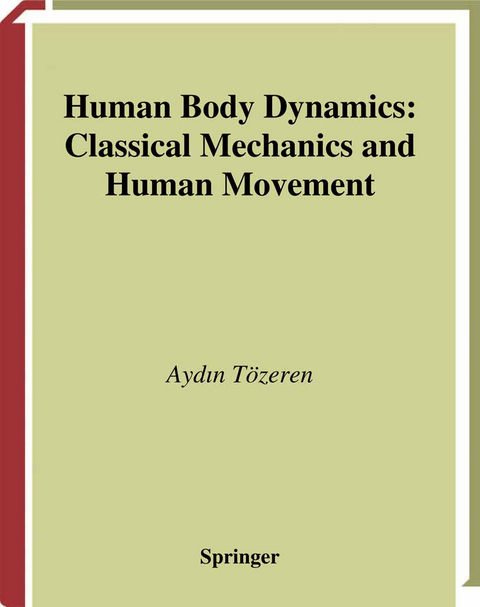
Human Body Dynamics
Classical Mechanics and Human Movement
Seiten
2013
|
Softcover reprint of the original 1st ed. 2000
Springer-Verlag New York Inc.
978-1-4757-7390-3 (ISBN)
Springer-Verlag New York Inc.
978-1-4757-7390-3 (ISBN)
“The human body is a machine whose movements are directed by the soul,” wrote René Descartes in the early seventeenth century. The intr- sic mechanisms of this machine gradually became clear through the hard work of Renaissance scientists. Leonardo da Vinci is one such scientist from this period of enlightenment. In pursuit of knowledge, Leonardo dissected the bodies of more than 30 men and women. He sawed the bones lengthwise, to see their internal structure; he sawed the skull, cut through the vertebrae, and showed the spinal cord. In the process, he took extensive notes and made carefully detailed sketches. His drawings d- ferentiated muscles that run across several joints from those muscles that act on a single joint. “Nature has made all the muscles appertaining to the motion of the toes attached to the bone of the leg and not to that of the thigh,” wrote Leonardo in 1504 next to one of his sketches of the lower extremity, “because when the knee joint is flexed, if attached to the bone of the thigh, these muscles would be bound under the knee joint and would not be able to serve the toes. The same occurs in the hand owing to the flexion of the elbow. ” Another Renaissance scholar who made fundamental contributions to the physiology of movement is Giovanni Alfonso Borelli. Born in 1604 in Naples, Borelli was a well-respected mathematician.
Human Body Structure: Muscles, Tendons, Ligaments, and Bones.- Laws of Motion: Snowflakes, Airborne Balls, Pendulums.- Particles in Motion: Method of Lumped Masses and Jumping, Sit-Ups, Push-Ups.- Bodies in Planar Motion: Jumping, Diving, Push-Ups, Back Curls.- Statics: Tug-of-War, Weight Lifting, Trusses, Cables, Beams.- Internal Forces and the Human Body: Complexity of the Musculoskeletal System.- Impulse and Momentum: Impulsive Forces and Crash Mechanics.- Energy Transfers: In Pole Vaulting, Running, and Abdominal Workout.- Three-Dimensional Motion: Somersaults, Throwing, and Hitting Motions.
| Zusatzinfo | XVIII, 316 p. |
|---|---|
| Verlagsort | New York, NY |
| Sprache | englisch |
| Maße | 152 x 229 mm |
| Themenwelt | Studium ► 1. Studienabschnitt (Vorklinik) ► Physiologie |
| Naturwissenschaften ► Biologie | |
| ISBN-10 | 1-4757-7390-0 / 1475773900 |
| ISBN-13 | 978-1-4757-7390-3 / 9781475773903 |
| Zustand | Neuware |
| Haben Sie eine Frage zum Produkt? |
Mehr entdecken
aus dem Bereich
aus dem Bereich


